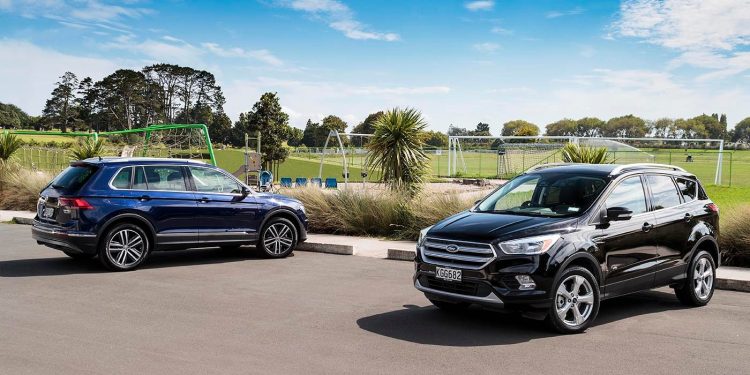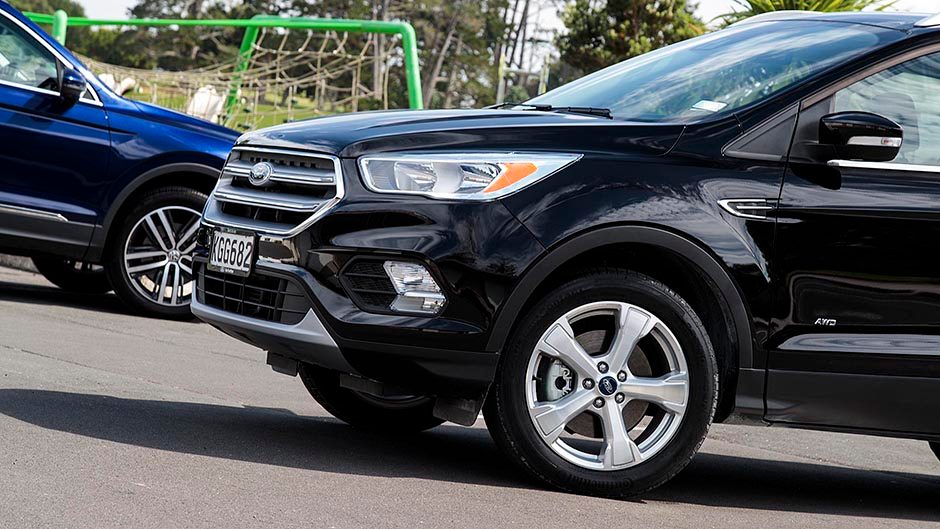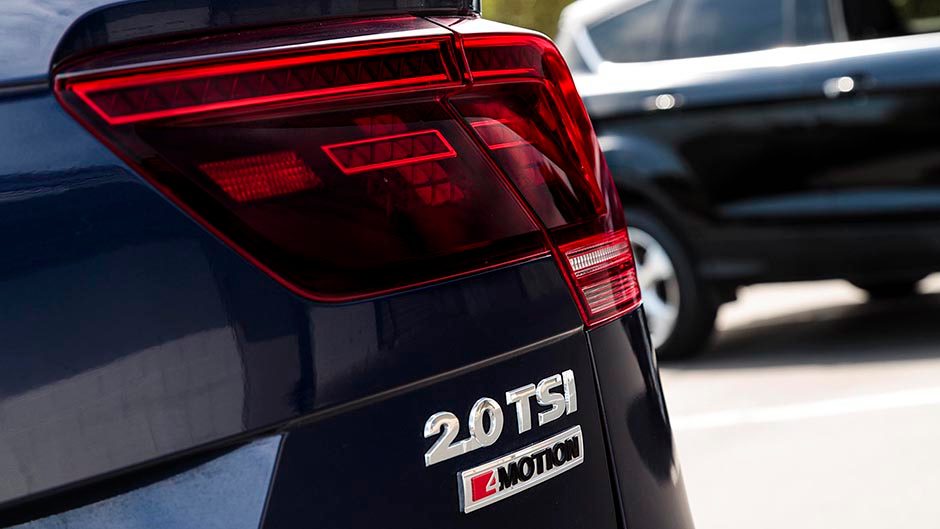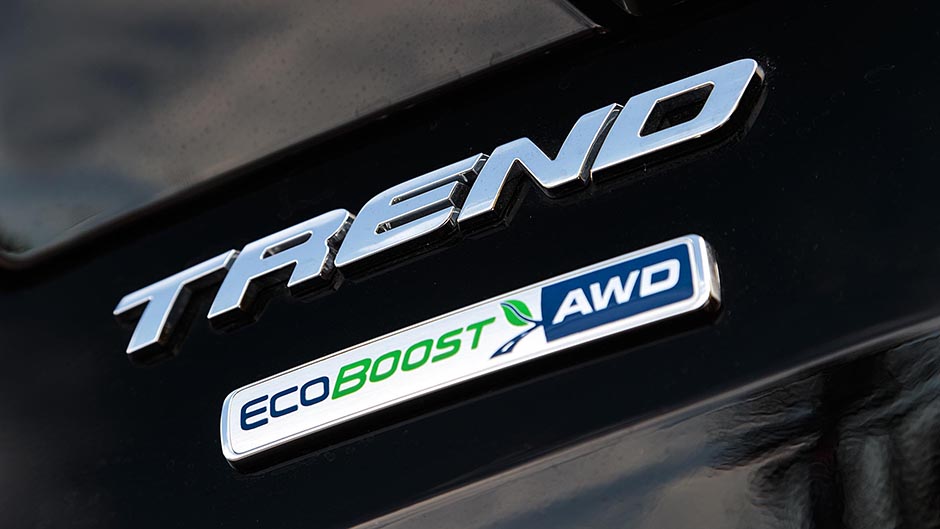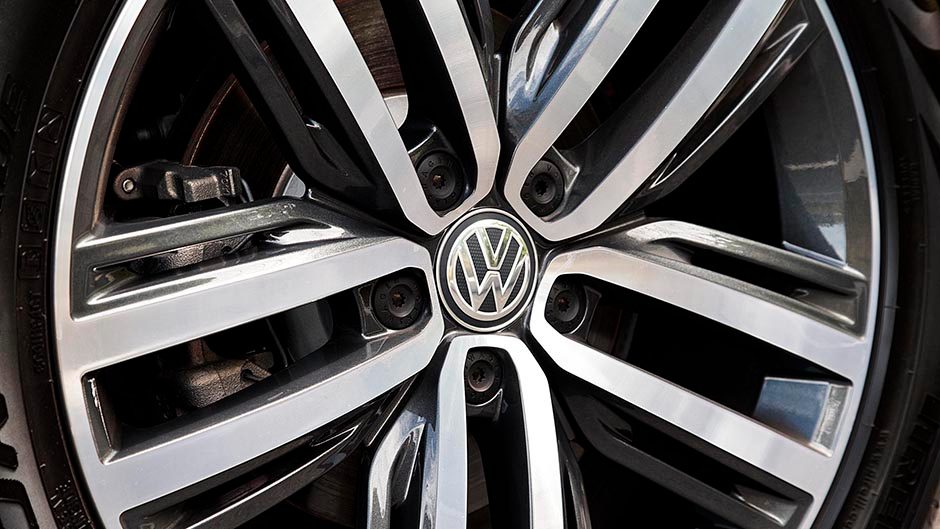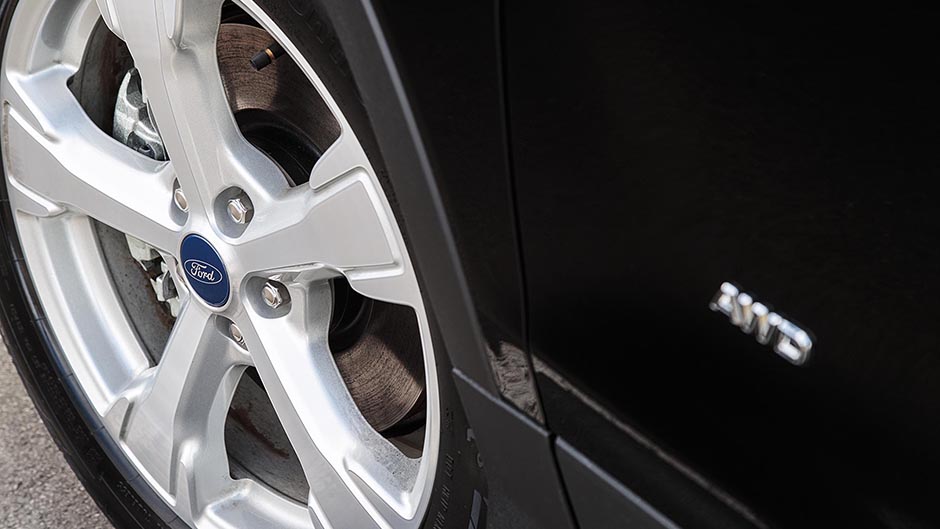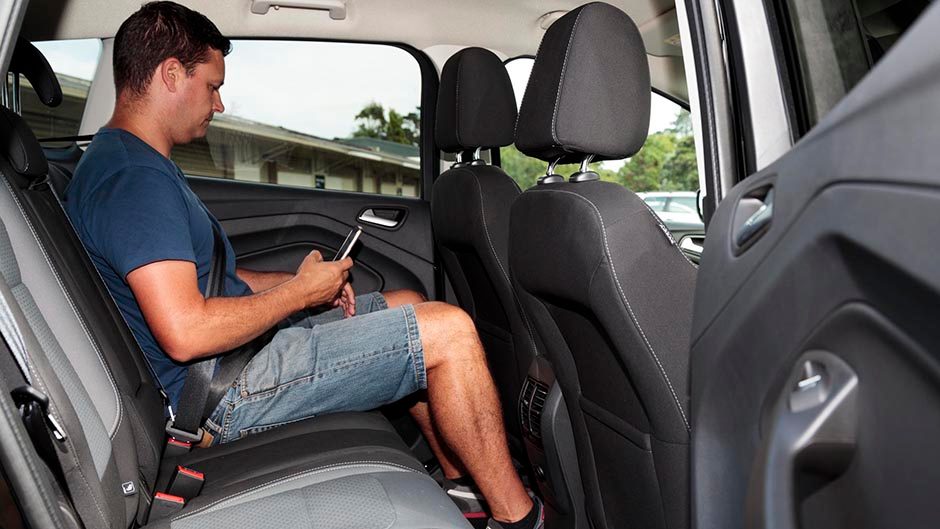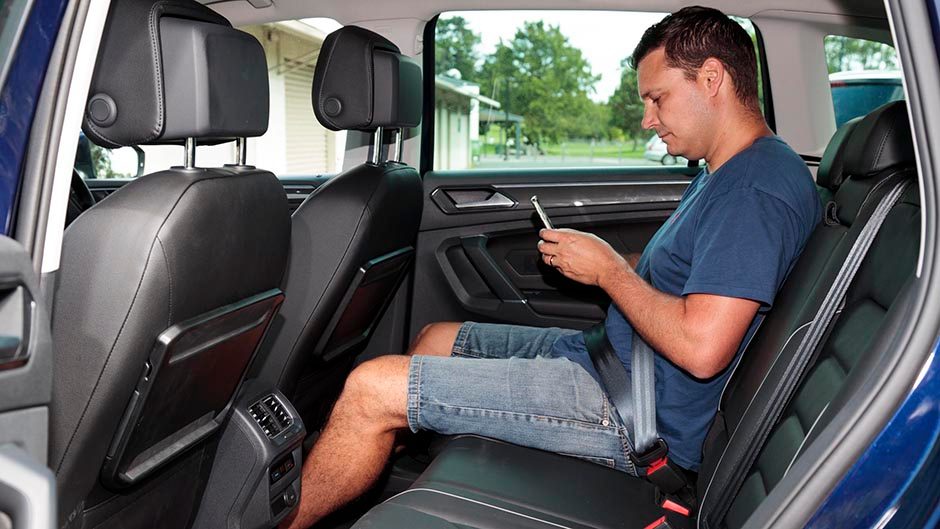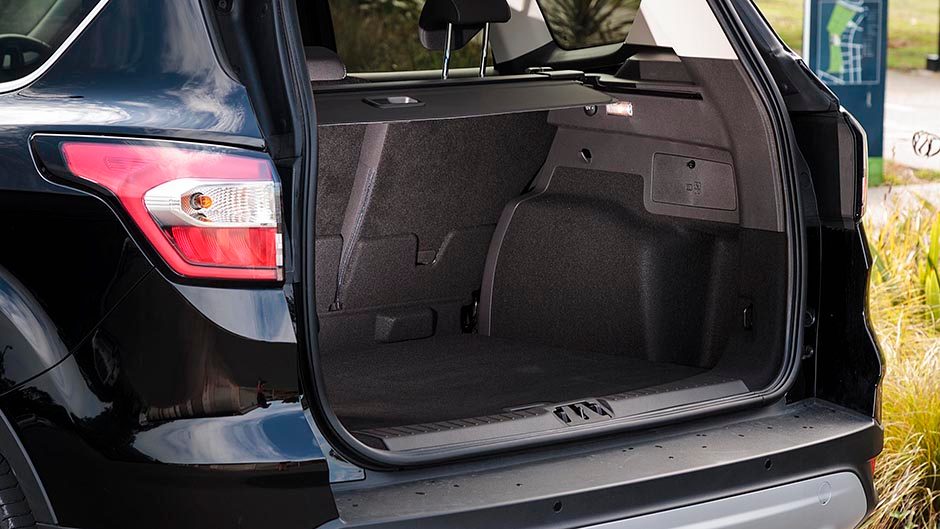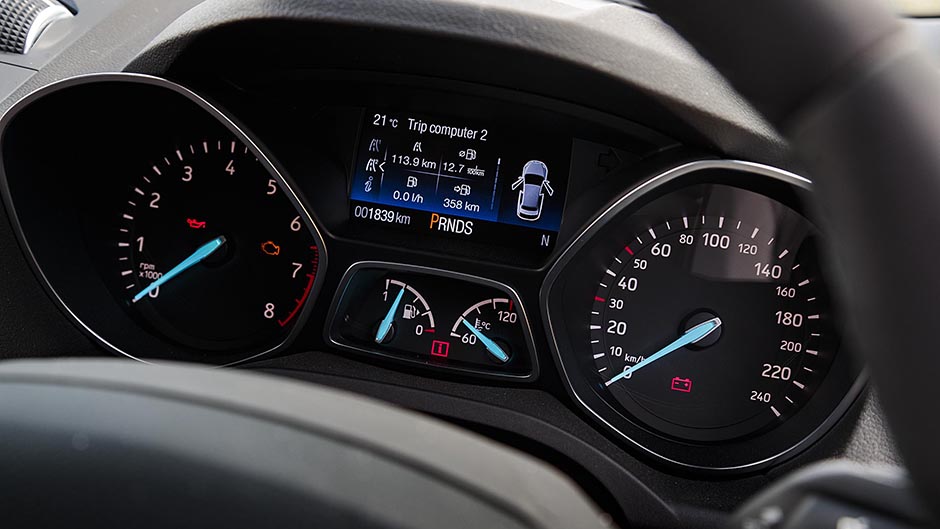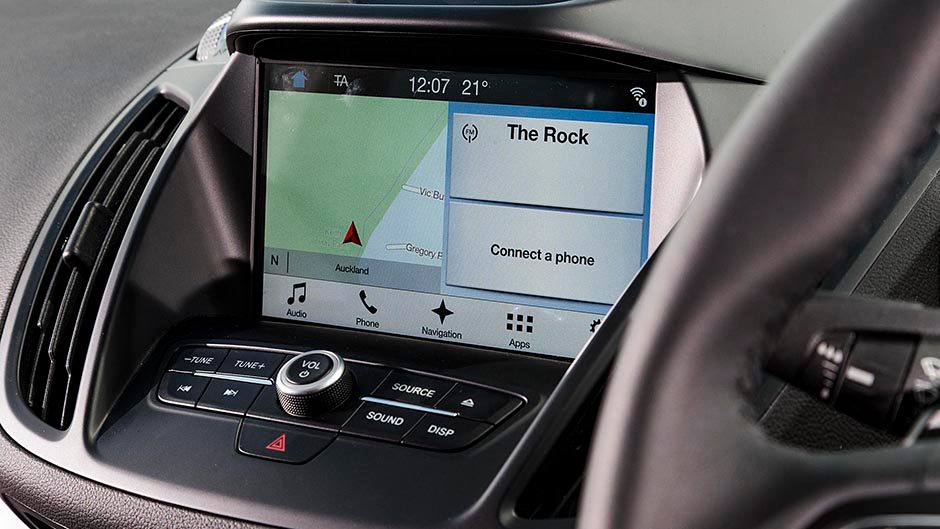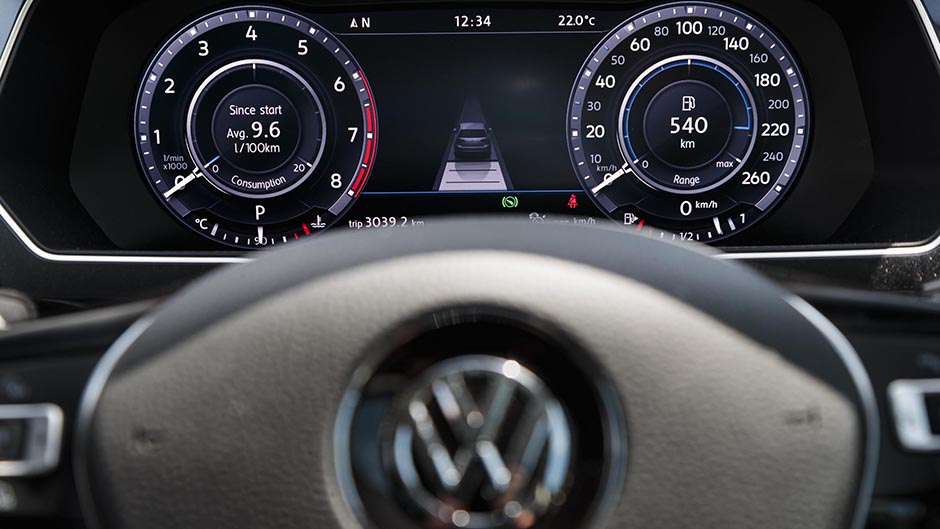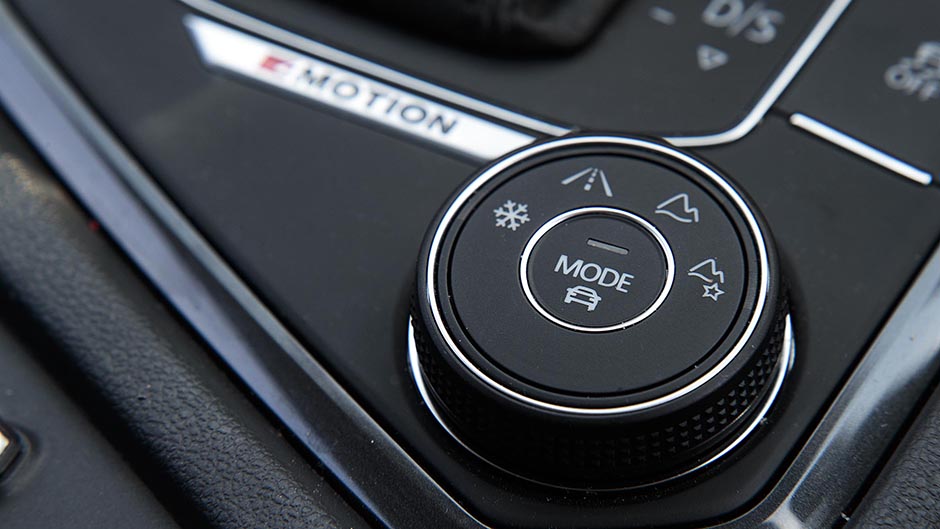2016 Ford Escape vs VW Tiguan comparison
Words: Kyle Cassidy | Photos: Tom Gasnier
These SUV sorts are right popular at present and the fight for your patronage gets ever fiercer between the rivals. Does Ford’s new Escape do enough to sway those contemplating VW’s successful Tiguan?
Ford NZ is hoping its new Escape will right the wrongs of the old Kuga. As Louisson mentioned last month in his review of the top Titanium variant, Escape is not new, it’s more of a major Kuga update. Along with a new name and fresh face, Ford has added variants, the range now totalling seven, with added front-drive and mid-spec level offerings.
Ford’s also taken the opportunity to sharpen the price and update the spec sheet to make the Escape more competitive in a cut-throat segment. Kuga was hardly a player in the scheme of things, way back in eighth place in its segment last year, and rarely featuring in the list of top selling nameplates each month. But a new name and a new year, Escape is now back in the frame, nudging its way into the top ten sellers for the month in February.
While there’s a right scrap on for the cash in the mass market, VW has cunningly reaffirmed its place in the ‘upper mass market’, or semi-premium space and the strategy is working well for Tiguan; despite its price premium it’s so far outpointing the discounter specials like the Outlander and Tucson. It’s even ahead of the CX-5, though most know there’s a new Mazda due here in a month’s time. With Ford aiming high and Tiguan on a roll we thought we’d bring these two together to see whether it’s worth paying the extra for the VW.
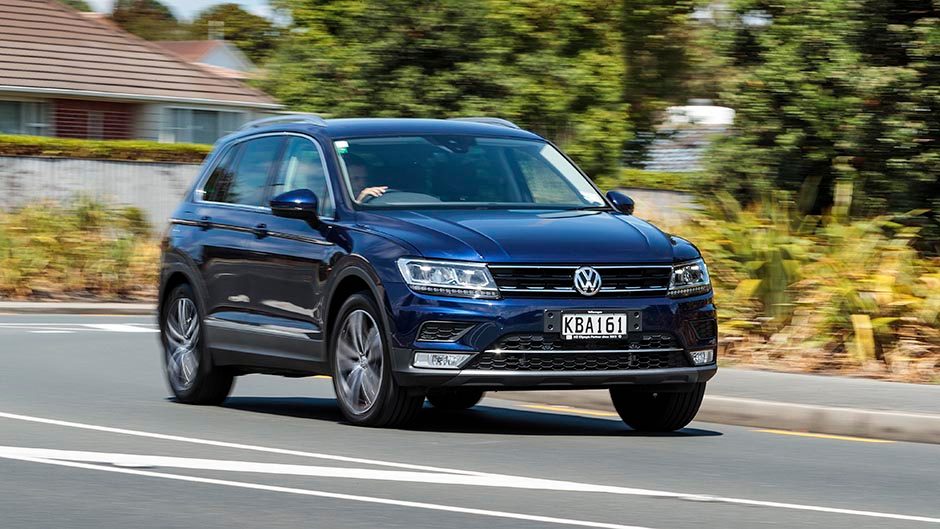
The players Where Escape starts at $38k and tops out at $55k, Tiguan’s five-model range begins at $42k and reaches $67k. We were loaned a 2.0-litre AWD Escape in Trend trim which costs $45k. The Tiguan TSI Highline 4motion is its mechanical match but it’s much pricer at $58K. However, people don’t mind paying extra for the Tiguan it seems from the sales figures, and the most popular so far this year is the R line, the most expensive.
Both companies offer a lower powered 2WD model too, the Escape Trend front driver at $42k with a 134kW/240Nm 1.5 turbo. The 2WD Highline uses a 110kW/250Nm 1.4 turbo and goes for $48k. It is worth noting the difference between the Escapes is purely mechanical whereas the Tiguan 4motion also offers more in the way of standard features.
But regardless of front- or AWD, VW asks a decent premium for its product. Helping justify the price, the Tiguan Highline is well appointed with forward collision warning and AEB complete with pedestrian detection, lane keeping and blind spot warning but the adaptive cruise is $1000 extra, worth it for the traffic jam stop and go function.
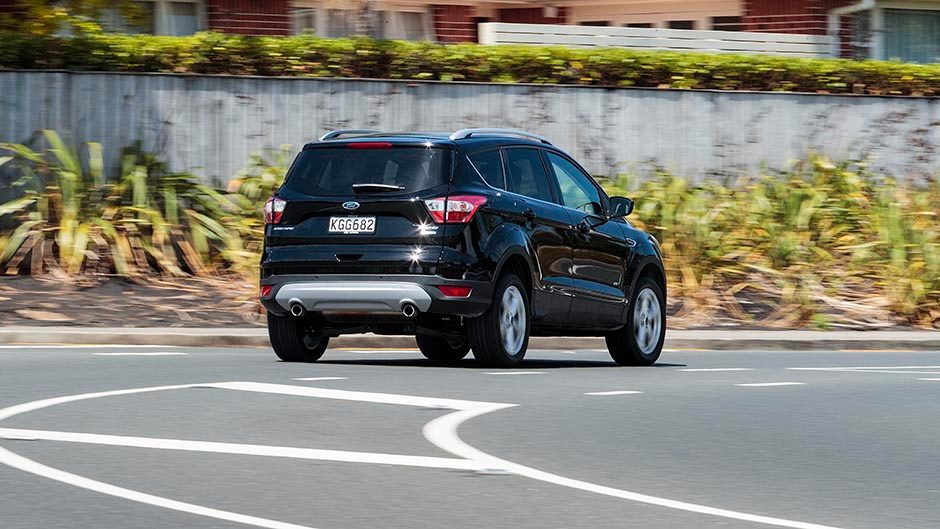
There are 19s, a driver profile system that saves all of your favourite settings, LED lights, front and rear sensors, a reversing and surround view camera, tri-zone air, smart key, a powered tailgate, partial leather trim, an eight-inch touchscreen with smartphone compatibility and the active info display that lets you tailor the look of the instruments. Another extra worthy of consideration is the $1200 three-year/45,000km capped servicing deal, something that other manufacturers in the mass market should look at introducing too.
For the money asked one can’t scoff at what the Trend offers; AEB and blind spot monitoring make the grade and your infotainment needs are sorted by Ford’s Sync system or CarPlay and Android Auto if you prefer. There’s no smart key, the tailgate you lift yourself, and the seats come trimmed in cloth but rear sensors are complemented by a reverse camera, there’s dual zone air and you get 18-inch alloys too.
Performance on a par? This particular Tiguan comes with a 132kW/320Nm 2.0-litre petrol turbo, a twin-clutch auto and an on-demand AWD system. The Ford is similar in set-up with a 2.0-litre turbo four but with a healthier 178kW and 345Nm. The torque converter auto has one less ratio with six but the AWD system is also an on-demand, never really meant to go off-road system. Both pass EU6 emissions standards, or are claimed to at least… On the go, they each run to 100km/h in under eight seconds, the Tiguan just, but the Escape feels a step more enthusiastic and it’s overtaking time is nearly a second more effective.
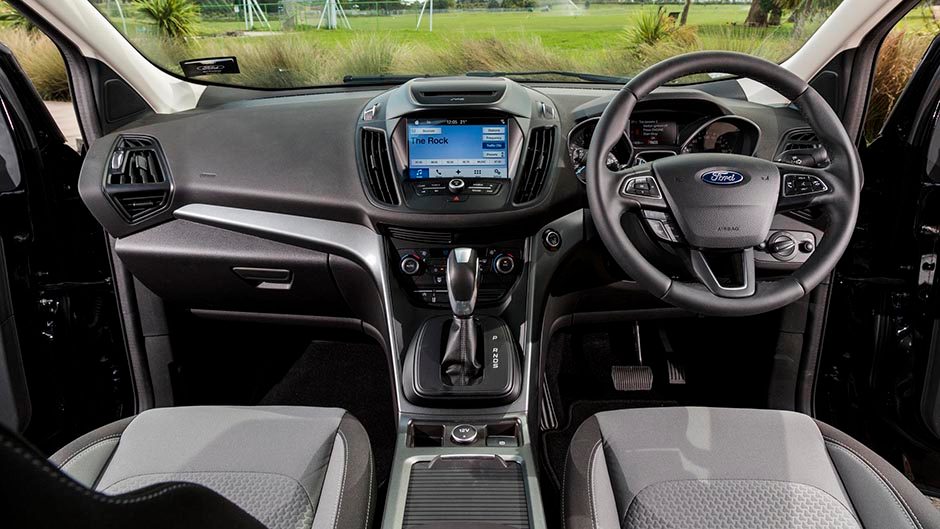
Both have decent enough midrange urge to get by on without resorting to too many revs, which can send fuel use soaring. But overtaking is always quicker if you can summon more horses, and the Ford feels comfortably faster the harder you push. It too has more oomph in the midrange, lugging more happily in-gear whereas the Tiguan needs to drop a cog to replicate the same sort of acceleration, both in and out of town.
With Tiguan, the intent is there, it just needs a slap around with the Sport mode button to get it enthused. The Ford is rated at 8.6L/100km on average, the Tiguan at 7.4, though both are more likely to settle on a long term average closer to their urban fuel use figures, which relates to high nines for the VW and low elevens for the Ford.
They each get on the torque curve quickly enough, the auto in the Ford more refined at low speeds, the twin-clutch with the occasional laboured take-up, but then it is slicker through the ratios, and both work well enough in the context of the class. The Tiguan has the greater maximum braked tow rating, 2500kg versus just 1500kg for Escape. Refinement the key? If you place ride and refinement ahead of keener dynamics, the Tiguan is your mount. The Highline TSI on fixed suspension is nicely compliant and there’s less in the way of suspension and road noise compared with the Ford.
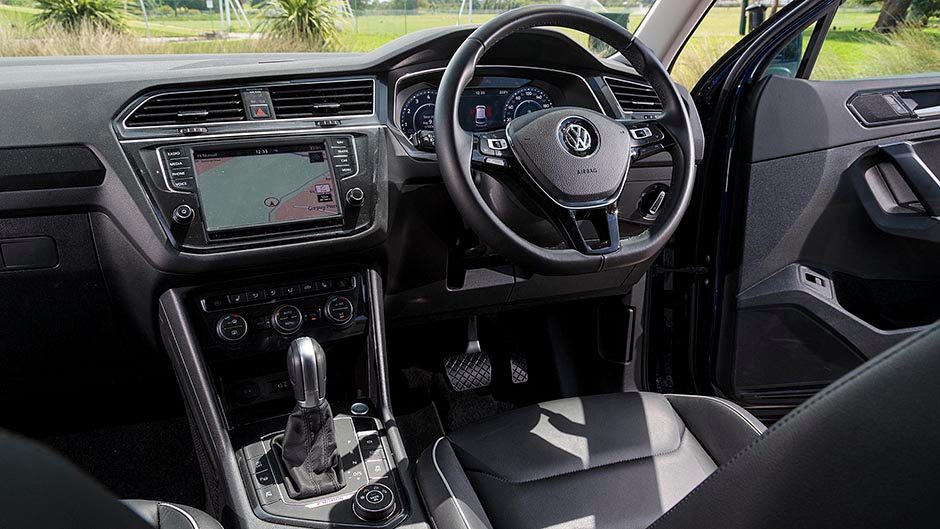
The Escape transmits more of the roading imperfections around town, yet it seems to manage the bumps better as speeds rise, strange but true. Both are tidy through the curves but there’s a greater deal of feedback at the wheel of the Escape, and it manages to turn itself better, with less risk of running it into understeer. But with more than 1700kg to throw around, both feel porky and lean on their torque vectoring function to help stave off excess sledging.
Neither Sport transmission mode is too racy, but the Escape could be better at keeping the engine perky when you brake for a bend, the way the Tiguan does. While the VW’s steering is less interactive in the boonies, it’s preferable in town with better weighting (the Escape suffering an odd self-centreing moment every so often) and the quick, variable ratio steering makes it easier to manoeuvre.
Though the quoted turning circle measurement is greater than that claimed for the Escape, the Tiguan actually manages to turn around using less road than the Ford. Clearly they are quoted using a different standard. Practical with panache It may be an older design but the Escape is still an interesting look, the frontal refresh doing enough to modernise its appearance but if you like them styled more conservatively, the Tiguan is unlikely to offend. Escape’s rejuvenation includes an interior makeover with a less button-intensive dash while an electric handbrake and a relocated gear lever free up space on the console for better cup holders.
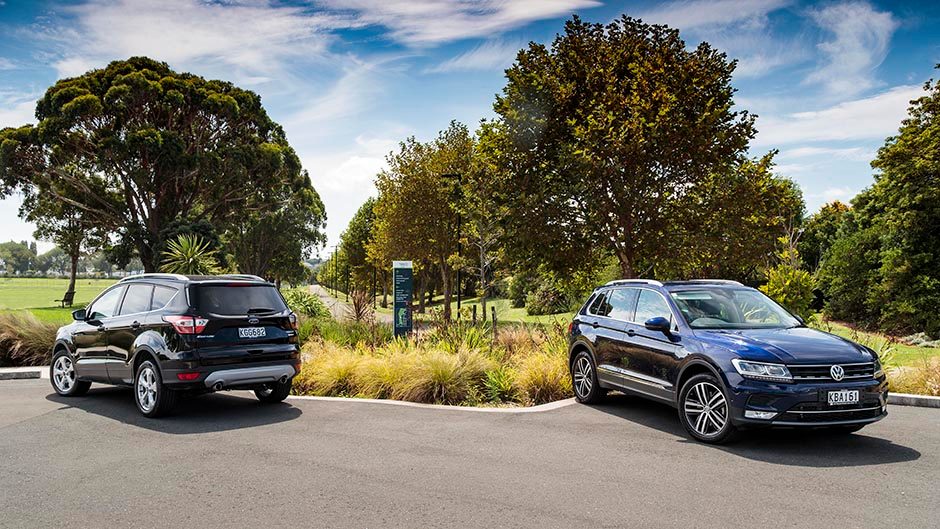
Still, those in the Tiguan are better still and when in Park, the Escape’s lever obstructs the ventilation controls. Fathoming the operation of the steering wheel buttons is more straightforward in the Escape. Moreover, the cruise control confusingly goes up in 10km/h increments in the VW above 70km/h. You can pull the wand in another direction for 1km/h increments, but only up and not down, so it makes setting a 106km/h cruise complicated. The Ford’s seat I found to be both more comfortable and supportive and I prefer cloth to the leather in the Tiguan, which looks more premium than it feels.
But there is no denying that the Tiguan imbues a higher sense of quality inside, with its lined door pockets, improved tactility of the switchgear and the general build and materials used. The rear legroom is plentiful in the Tiguan, and the seat comfy too, with your own air conditioning controller as well. There’s easier entry too via a wider opening door. The space isn’t dissimilar in the Escape but the seat is not quite as comfy. Both rear seats fold easily enough, the Tiguan with the flatter load area, while the effective boot space is all but the same in each though there’s a variable load height floor in Tiguan to give it more depth, and the rear seat can slide to offer more length too. Both have space saver spares.
So, really worth the extra money? That all depends on your priorities. If you desire the badge cache, the more premium cabin ambience and refinement, you’ll happily pay the extra for Tiguan, while it’s superior practicality is a bonus too. However, it’s a far greater stretch, and with our penchant for things that go and steer well, the Escape ticks most of our boxes, and in mid-level Trend spec, makes more sense than the Titanium we tested last month. Tiguan is the better all round prospect, but at a price. We are fairly sure the Tiguan will face its sternest mass market challenger in the form of the new Mazda CX-5 which arrives next month.
| Model | Ford Escape Trend 2.0 AWD | Price | $44,990 |
| Engine | 1999cc, IL4, T/DI, 178kW/345Nm | Drivetrain | 6-speed auto, on-demand AWD |
| Fuel Use | 8.6L/100km | C02 Output | 197g/km |
| 0-100km/h | 7.55sec | Weight | 1743kg |
| Model | VW Tiguan TSI Highline 4Motion | Price | $57,990 |
| Engine | 1984cc, IL4, T/DI, 132kW/320Nm | Drivetrain | 7-speed twin-clutch, on-demand AWD |
| Fuel Use | 7.4L/100km | C02 Output | 170g/km |
| 0-100km/h | 7.98sec | Weight | 1702kg |


